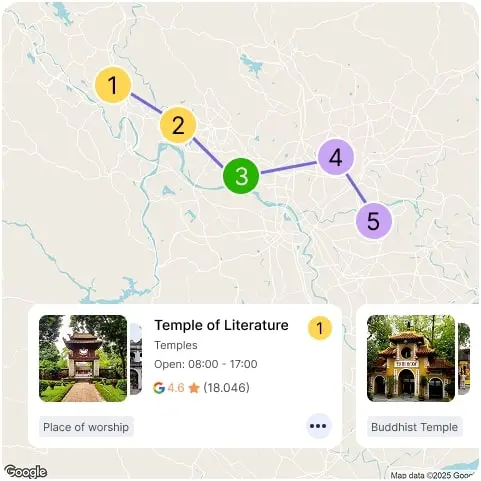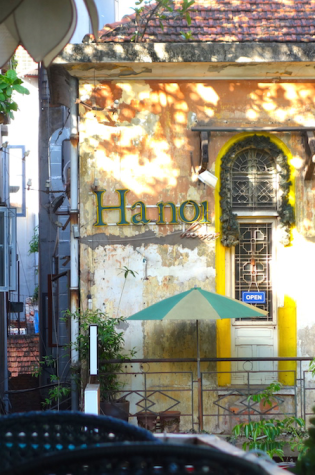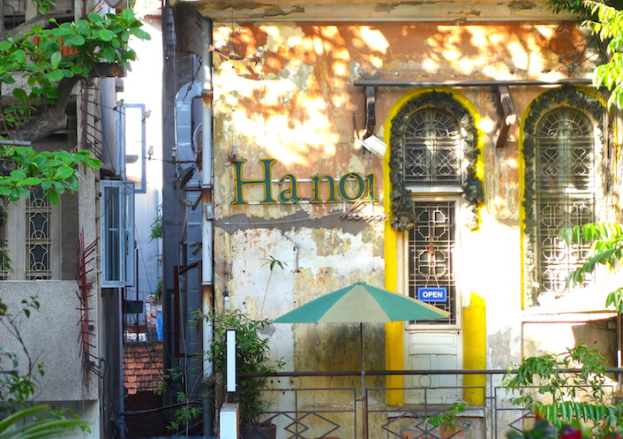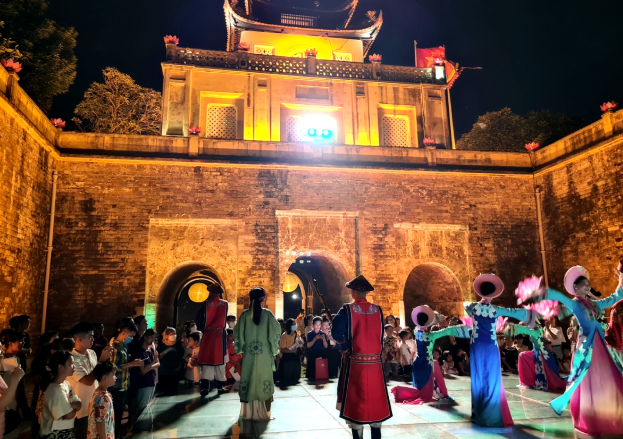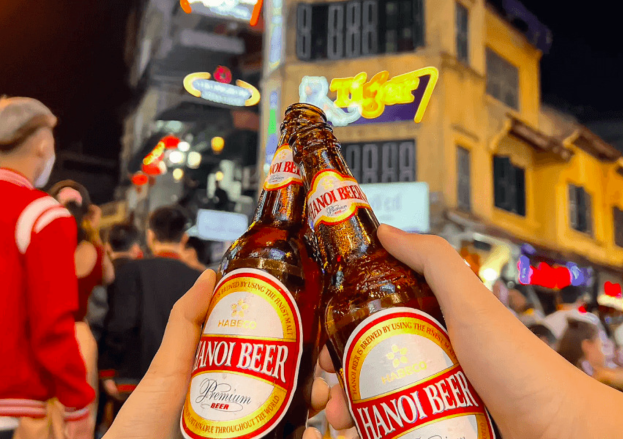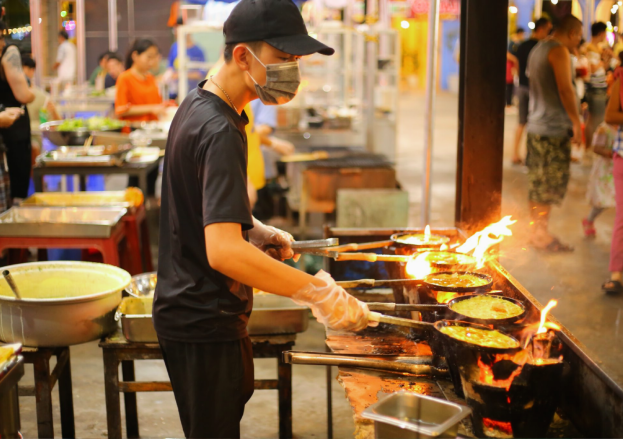
Hands-On Cultural Experiences
Immerse yourself in Vietnam’s rich cultural heritage through interactive experiences. Learn traditional crafts, cook local dishes, and take part in authentic cultural activities firsthand.
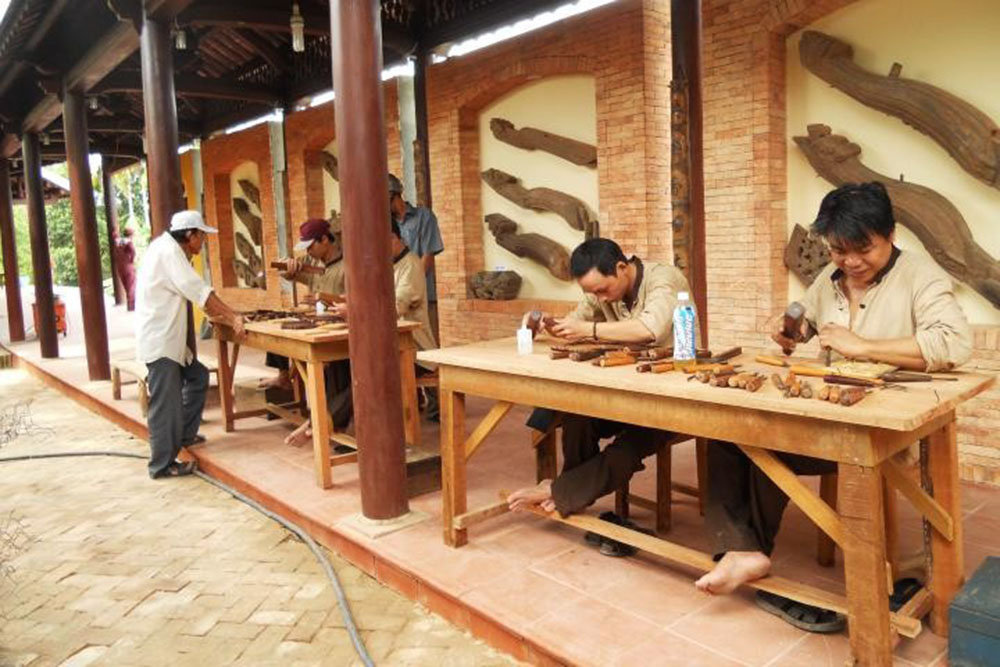
Discover the art of Woodworking at Kim Bong carpentry village
29 Aug, 2025
Kim Bong Village - Long-established traditional craft village in Vietnam Kim Bong Carpentry Village lies on the banks of the Thu Bon River, just a short ride from Hoi An Ancient Town. The village has a history spanning over 500 years and is renowned for producing high-quality wooden furniture and handcrafted artworks. Unlike mass-produced items, every piece from Kim Bong reflects meticulous attention to detail, patience, and creativity. The village has become not only a hub for woodworking but also a destination for cultural tourism, where visitors can learn about traditional tools, join workshops, and observe artisans at work. Hands-On Woodworking Experience One of the highlights for travelers is the hands-on woodworking experience, where visitors can try their hand at creating wooden products under the guidance of local artisans. Rather than simply observing, participants are encouraged to actively engage in each step of the woodworking process The experience usually includes: Understanding Materials: Learn about different types of wood used in Kim Bong, such as jackfruit, teak, and rosewood, and how their properties affect the final product. Learning Traditional Techniques: Watch demonstrations of carving, joining, sanding, and polishing, using both traditional hand tools and modern equipment. Creating Your Own Piece: Guided by skilled artisans, visitors can make small items like wooden trays, picture frames, or decorative figurines. Cultural Insights: Artisans often share stories about the history of the village, family traditions, and the significance of woodworking in daily Vietnamese life. The Woodworking Process Woodworking in Kim Bong Village is more than just a craft—it’s an art form deeply embedded in Vietnamese culture. Each step demands precision, patience, and creativity, reflecting centuries of knowledge passed down through generations. Step 1: Selecting the Wood The process begins with choosing the right type of wood. Artisans carefully evaluate each piece for color, grain, and hardness to ensure it is suitable for the intended product. Commonly used woods include jackfruit, teak, and rosewood, each chosen for its durability and aesthetic appeal. Selecting the right wood is crucial, as it determines the quality and longevity of the final piece. Step 2: Cutting and Shaping Once the wood is selected, it is cut and shaped using traditional tools such as saws, chisels, and planes. This step requires skill and accuracy to ensure the pieces fit perfectly and maintain structural integrity. Artisans often work with a combination of hand tools and simple mechanical aids, balancing efficiency with traditional techniques. Step 3: Carving and Detailing Carving is the heart of the woodworking process. Skilled artisans create intricate patterns and motifs inspired by Vietnamese culture, including floral designs, mythical creatures, and geometric shapes. This stage requires a steady hand, keen eye, and years of experience to achieve symmetry and detail. Step 4: Sanding and Polishing After carving, each piece is meticulously sanded to smooth rough surfaces and remove any imperfections. The wood is then polished with natural oils or varnishes, enhancing the texture, grain, and natural color. This step not only improves the aesthetic appeal but also protects the wood, ensuring durability. Step 5: Finishing Touches The final stage involves adding decorative or functional elements. This could include attaching hinges, handles, or inlays, depending on the type of item. Every piece is carefully inspected to ensure it meets the village’s high standards before it is ready for use or display. Tips for Visitors To make the most of your trip to Kim Bong Carpentry Village, keep these tips in mind: Time Your Visit: Mornings are ideal to see artisans actively working and to participate in workshops. Respect Local Culture: Follow the guidance of artisans, handle tools carefully, and avoid disrupting ongoing work. Take Home a Handmade Souvenir: Purchase items directly from artisans to support local families and preserve traditional craftsmanship. Wear Comfortable Clothing: Activities can involve standing, bending, or handling wood, so dress comfortably. A visit to Kim Bong Carpentry Village is not just about making wooden items—it’s a journey into Vietnam’s cultural heritage. Travelers leave with not only beautifully handcrafted souvenirs but also a deeper appreciation for the patience, skill, and artistry involved in traditional woodworking. For anyone interested in culture, craft, or hands-on experiences, Kim Bong offers an unforgettable adventure.
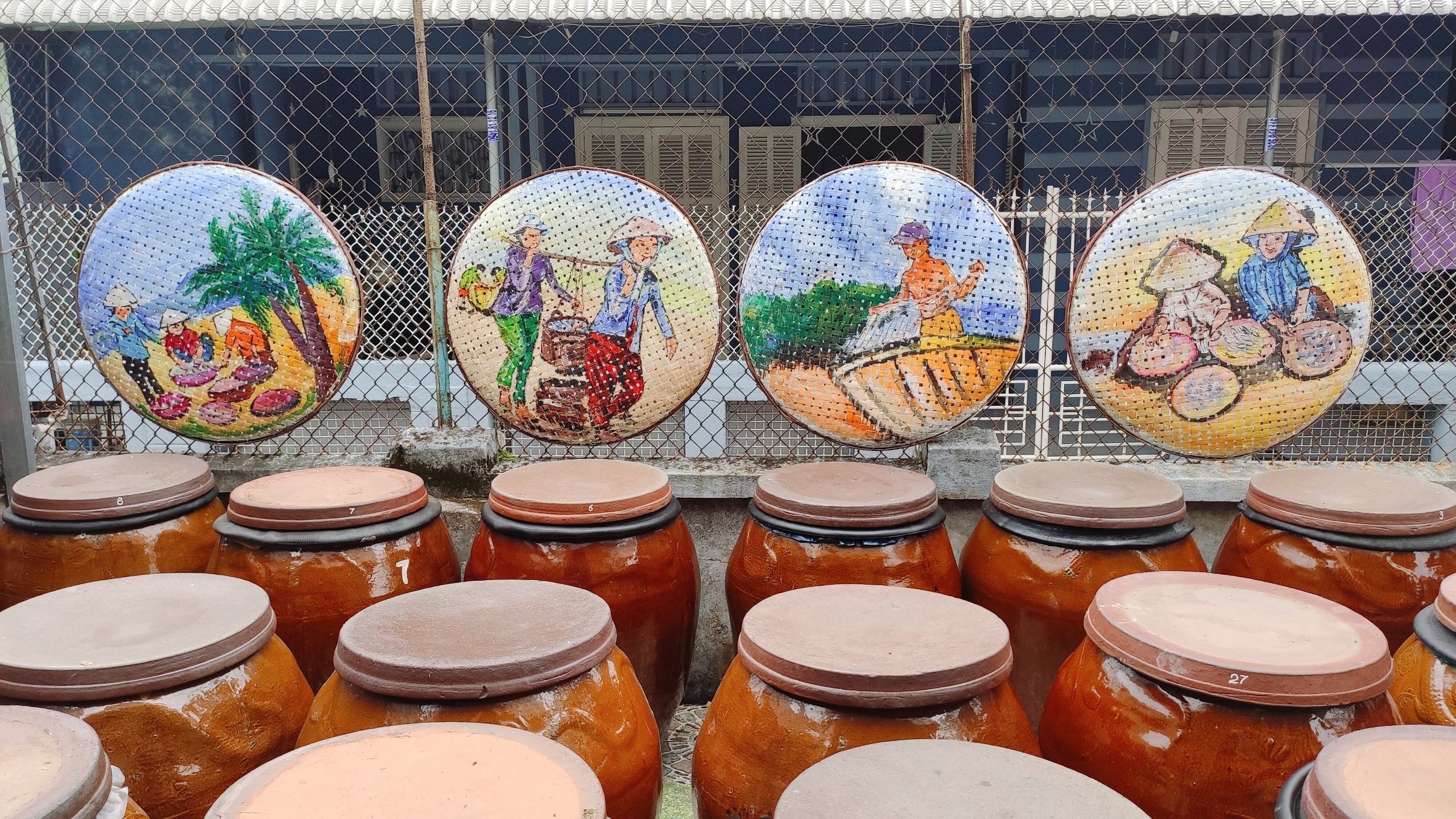
Learn about the traditional fish sauce-making process at Nam O fish sauce village
29 Aug, 2025
A Brief Introduction to Nam O Fish Sauce Village Nam O Fish Sauce Village, Da Nang is located in the southern part of the city, about 3 km from the Hai Van Pass area. From the city center, you can travel along Le Duan Street toward Hai Van Pass, then continue to Lien Chieu District, Hoa Hiep Ward to reach this traditional fish sauce village. This craft village has a history of hundreds of years. Even the elders in the village cannot recall its exact age, only remembering that by the late 19th century, the village had already developed and become famous throughout the region. What makes the traditional fish sauce-making process at Nam O special? Visiting Nam O Fish Sauce Village, visitors can understand what makes this local delicacy unique: its rich flavor and aroma. Achieving this requires years of preserving a traditional brand, with every step meticulously carried out by hand. Step 1: Salting the Fish The main ingredient for this famous Da Nang specialty is anchovies (ca com than), which are mostly caught around the third lunar month. Only fresh fish of a size comparable to the little finger are selected. According to local experience, the fish must not be washed with fresh water to preserve the best flavor. In addition, the salt used must be Ca Na salt, with each grain white and fully matured, and it must not have been exposed to rain. Step 2: Fermentation After layering the salted fish evenly, villagers place them in earthen jars in dry, ventilated areas. The jars are clearly marked with the date to ensure proper fermentation time. Step 3: Extracting the Fish Sauce The fish are fermented for 12 to 18 months. Most villagers then filter the fish sauce manually, using a bamboo funnel-like tool called vuot tre, lined with a clean cloth, with a basin underneath to collect the liquid fish sauce. The Experience of Making Fish Sauce Visiting Nam O, you will not only learn about the history of the village but also have the opportunity to experience the fascinating process of making fish sauce yourself. Locals warmly welcome visitors into their workshops, where you can see firsthand how fresh anchovies and salt are carefully prepared before entering the long fermentation process. You may even have the chance to roll up your sleeves and join in certain steps, making the experience both educational and hands-on. However, to be well-prepared and avoid any difficulties during the exploration and hands-on experience of making fish sauce, here are some helpful tips: Respect local customs: Nam O is not just a production site but also a community with its own traditions. Always show respect when visiting homes or workshops. Be prepared for strong aromas: The fermentation process has a very distinctive smell that may be overwhelming at first but is part of the authentic experience. Buy directly from locals: Supporting local families by purchasing their fish sauce not only ensures quality but also helps preserve this cultural heritage. Visit during anchovy season: If you want to see the busiest and most lively production period, plan your trip between March and August. A visit to Nam O Fish Sauce Village is more than just witnessing a traditional craft—it is an opportunity to connect with a vibrant cultural heritage. By observing the fermentation process, interacting with local artisans, and trying your hand at certain steps, visitors gain a deeper appreciation for this time-honored tradition. Purchasing fish sauce directly from the villagers helps support the community and preserve their craft.

Experience Bamboo and Rattan weaving with artisans at Bao La village
29 Aug, 2025
General Information about Bao La Village Bao La Village, located in Quang Phu commune, Quang Dien district of Thua Thien Hue province, is one of the most well-known traditional craft villages in Central Vietnam. With a history of more than 600 years, the village has specialized in bamboo and rattan weaving, creating various household items such as baskets, trays, mats, sieves, and handicrafts for daily life. In recent years, Bao La has developed not only as a production hub but also as a community tourism destination. Visitors coming here have the chance to learn about the cultural identity of rural craft villages, meet local artisans, and gain a deeper appreciation for the value of traditional crafts. Hands-on Experience Activities One of the highlights for travelers is the bamboo and rattan weaving experience guided directly by skilled artisans. Instead of just observing, visitors are encouraged to sit down, try their hands at splitting bamboo, shaping frames, and weaving small items. The experience usually includes: Learning about different types of bamboo and rattan used in weaving. Watching demonstrations of traditional weaving techniques. Making simple handcrafted products such as small baskets, fans, or souvenirs. Interacting with artisans, who share stories about their family traditions and the role of weaving in village life. This activity not only offers cultural enrichment but also creates memorable moments for travelers of all ages. The Weaving Process Bamboo and rattan weaving in Bao La Village is more than just a craft—it is a cultural heritage that showcases the patience, skill, and creativity of generations of artisans. Every product, whether a simple basket or a decorative piece, goes through a labor-intensive process where precision is key. The workflow includes several detailed stages: Selecting Materials The process begins with the careful selection of bamboo and rattan. Only mature plants are chosen, as they offer the right balance of flexibility and durability. Younger bamboo may be too soft and fragile, while older bamboo can be too rigid, making it difficult to weave. The choice of raw material directly influences the quality and longevity of the finished product. Processing Bamboo and Rattan After selection, the bamboo is cut into smaller pieces and treated to prevent cracking and insect damage. This involves soaking the bamboo in water for weeks or even months, then drying it under the sun to ensure toughness. Once dried, the bamboo is split into thin, even strips. Rattan, similarly, is peeled, cleaned, and softened, ready to be woven. This step is critical because the smoothness and consistency of the strips affect the beauty and precision of the final product. Designing the Frame Each product starts with a frame or base, which determines its shape and size. The artisan uses bamboo rods or thicker rattan pieces to create a skeleton that supports the weaving. Whether making a rice basket, a fishing trap, or a modern household item, the framework must be sturdy and proportional to maintain both function and aesthetics. Weaving This is the heart of the process. Strips of bamboo or rattan are meticulously interlaced by hand, following traditional weaving patterns. Some designs are simple and functional, while others feature intricate motifs that require years of experience to master. The artisan’s dexterity, rhythm, and patience come alive in this stage, as the weaving must be tight, even, and seamless to ensure both durability and beauty. Finishing Touches Once the weaving is complete, the product goes through finishing steps. The edges are trimmed neatly, rough surfaces are smoothed, and in some cases, the item is polished with natural oils or colored using eco-friendly dyes. Decorative details, such as painted patterns or fabric linings, may also be added to elevate the item beyond function and into the realm of art. Notes for Visitors To make the most of your trip to Bao La Village and truly enjoy the bamboo and rattan weaving experience, here are a few helpful tips: Best time to visit: The craft village is open year-round, but mornings are ideal as artisans are often busy with weaving at this time. Duration: A weaving experience typically lasts 1–2 hours, depending on the type of product visitors want to try. Souvenirs: Visitors can purchase finished products directly from artisans as meaningful keepsakes. Respect local culture: When joining activities, follow the guidance of artisans and avoid damaging materials. Accessibility: Bao La is about 15–20 km from Hue city center, making it convenient for half-day trips. A trip to Bao La Village is more than just sightseeing—it is an opportunity to connect with a living tradition and witness the dedication of artisans who have honed their craft over generations. By trying your hand at bamboo and rattan weaving, interacting with local families, and taking home unique handcrafted souvenirs, visitors leave with not only memories but a deeper appreciation for the artistry and cultural legacy of Central Vietnam.

Hands-On traditional lantern making experience in Hoi An
29 Aug, 2025
The Charm of Hoi An’s Lanterns Hoi An is one of those rare places in the world where light tells a story. As the sun sets, the entire Ancient Town transforms into a glowing wonderland, with hundreds of colorful lanterns swaying gently in the evening breeze. But these lanterns are not just decorations designed to attract tourists—they carry centuries of cultural and spiritual significance. The tradition of lantern making in Hoi An began in the 16th century, when the town thrived as a major international trading port. Traders from China and Japan brought their own lantern styles, and the local people adopted and reimagined the craft, giving birth to the Hoi An lanterns we see today. These lanterns symbolize prosperity, luck, and happiness, and they play an important role in festivals, ceremonies, and daily life. Walking through the Ancient Town at night, visitors are mesmerized by lanterns dangling from shop fronts, tea houses, and boats along the Thu Bon River. The vibrant reds, yellows, and blues paint a magical, dreamlike atmosphere, making Hoi An feel like a town frozen in time. A Workshop with a Personal Touch The lantern-making journey begins at a small family-run workshop tucked away in a quiet lane of Hoi An. These workshops are often passed down through generations, with artisans dedicating their lives to preserving the craft. As you step inside, you are welcomed by the warm smiles of local craftsmen and the sight of colorful silk fabrics stacked neatly in piles, bamboo frames waiting to be shaped, and completed lanterns of all sizes hanging proudly above. Before the hands-on activity begins, the artisans share stories about the history of lantern making—how the bamboo is carefully chosen and shaped, how silk is dyed using natural pigments, and how lanterns have become a symbol of Hoi An’s cultural identity. This introduction adds a deeper meaning to what you’re about to create. The first decision is perhaps the most exciting—choosing the shape of your lantern. From classic round designs to diamond, garlic, or lotus-shaped lanterns, each carries its own symbolism. Then comes the fun of selecting your fabric from an array of shimmering silks. Every color has a meaning: red for luck, yellow for prosperity, blue for peace, and green for growth. In this way, your lantern becomes more than an object—it becomes a reflection of your own personality and wishes. Crafting Your Lantern Once your materials are chosen, the crafting begins. The artisan hands you a bamboo frame and guides you through stretching the silk fabric across it. The process requires care, as you smooth out folds and ensure the silk wraps neatly around the structure. Your hands may stumble at first, but with each step, you start to feel the rhythm of the craft. This is where the experience becomes special. The workshop is not just about technique, but about connecting with tradition. As you work, the artisan may share family anecdotes or stories of how lanterns light up festivals like Tết (Lunar New Year) or the Full Moon Festival, when the entire town becomes a sea of glowing light. The dialogue between you and the craftsman transforms the activity into a cultural exchange—a bridge between the past and the present. Taking Home More Than a Souvenir At the end of the session, you get to hold your finished lantern—a piece of Hoi An you’ve created with your own hands. Unlike mass-produced souvenirs from gift shops, this lantern carries meaning, memories, and the time you’ve spent learning from a local artisan. Many workshops even allow you to make foldable lanterns, making it easy to pack in your luggage and take home. This way, every time you light it up back home, you’re instantly reminded of the magical nights spent in Hoi An, wandering its glowing streets. Hoi An is a town where history, art, and everyday life are beautifully intertwined—and lanterns are its beating heart. Joining a hands-on lantern-making workshop is not just about crafting a beautiful object, but about experiencing a living tradition. It’s about sitting side by side with local artisans, learning their stories, and creating something with your own hands that holds both cultural and personal meaning. When night falls and you see Hoi An illuminated by countless lanterns floating in the sky and on the river, you will feel an even deeper appreciation for the craft. And as you hold your own lantern, glowing softly in your hands, you’ll know you’ve taken part in a tradition that has lit up Hoi An for centuries—and will continue to do so for generations to come.
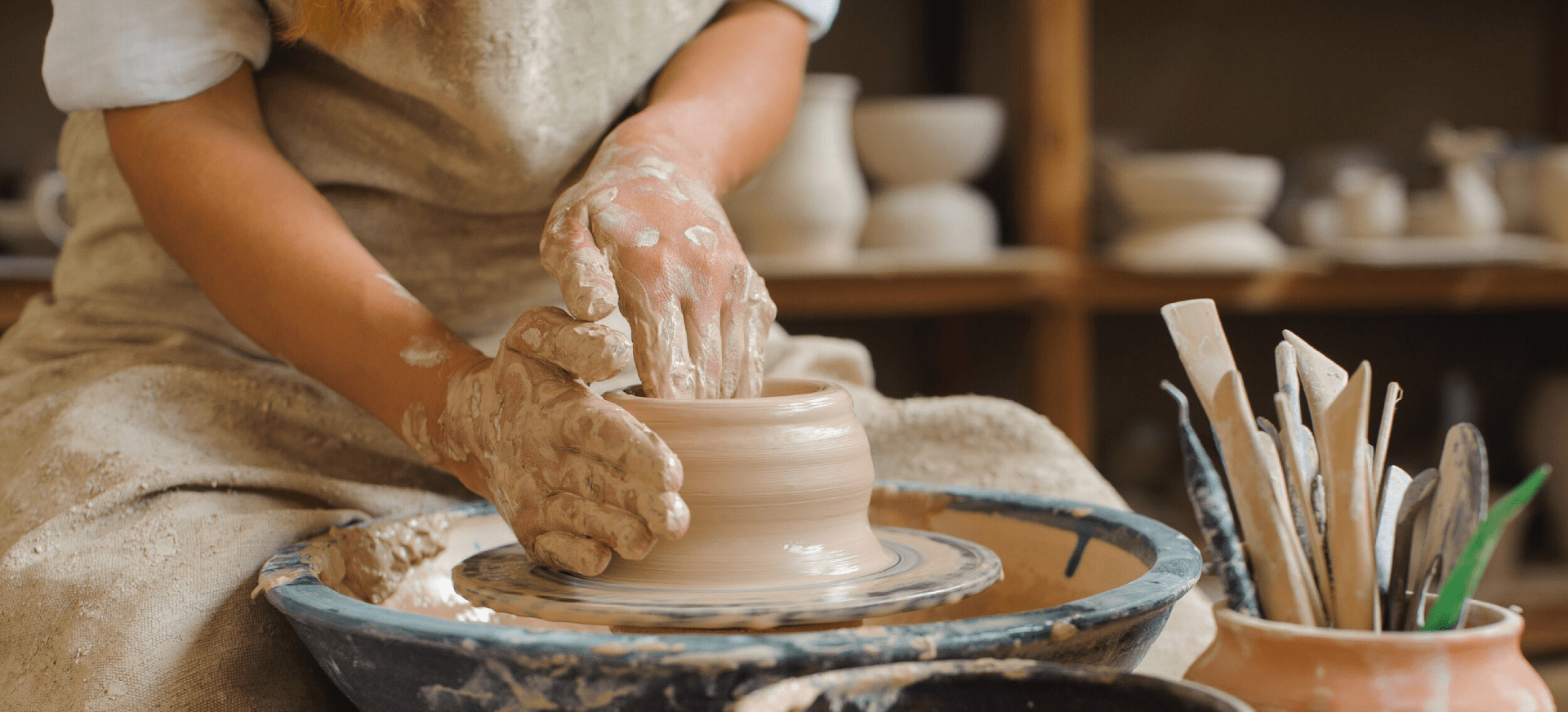
Create your own masterpiece: Hands-On pottery experience at Bat Trang village
28 Aug, 2025
The Legacy of Bat Trang Pottery Bat Trang Village has a history that spans over 1,000 years, dating back to the Ly Dynasty. Its name is synonymous with high-quality ceramics, known for both functional items like bowls, vases, and teapots, and decorative art pieces. The village has maintained its traditional techniques over centuries while also evolving to meet modern tastes, resulting in pottery that is both timeless and contemporary. When you visit Bat Trang, you’re not just seeing a village; you’re stepping into a living museum of Vietnamese pottery, where every alleyway is lined with workshops and galleries showcasing generations of craftsmanship. The artistry is not only in the finished products but also in the meticulous process that transforms simple clay into elegant forms. Why Choose a Hands-On Experience? While shopping for Bat Trang pottery is enjoyable, nothing compares to making your own piece. A hands-on pottery session allows you to: Connect with tradition: Experience the techniques and tools that have been handed down through generations. Explore creativity: Design and craft a unique piece that reflects your personal style. Understand the craft: Learn the skill, patience, and precision required to transform raw clay into beautiful pottery. These experiences are perfect for individuals, families, and groups, as they combine cultural education with artistic engagement. Preparing for Your Pottery Session Upon arrival at a Bat Trang workshop, you will be welcomed by artisans who explain the history and significance of pottery in Vietnamese culture. They introduce you to the materials—clay, water, and natural pigments—and demonstrate how to handle the tools properly. Workshops provide a relaxed and friendly environment. Beginners are encouraged to start with simpler items, such as small bowls or cups, while more experienced participants can attempt intricate vases or decorative pieces. The session is structured so that everyone leaves with a completed work, regardless of skill level. The Pottery-Making Process Here is what a typical hands-on pottery experience involves: Preparing the Clay: Artisans teach you how to knead and wedge the clay to remove air bubbles and achieve a smooth consistency. This step is essential to ensure the final product is strong and durable. Shaping the Clay: Using a potter’s wheel or hand-building techniques, you shape the clay into your desired form. The artisans provide guidance on proportions, symmetry, and balance, allowing you to create a functional and aesthetically pleasing piece. Adding Details: Once the basic shape is formed, you can add textures, patterns, or carvings. This stage allows for personal expression and creativity. You may also apply colored slips or natural pigments to decorate your piece. Drying and Firing: After shaping, the pottery is left to dry to a leather-hard stage. Then, it is carefully fired in a kiln at high temperatures to harden the clay. Some workshops even allow visitors to observe the firing process, witnessing firsthand the transformation from soft clay to sturdy ceramic. Glazing and Finishing: After the first firing, the piece may be glazed to give it a glossy finish and then fired again. The glaze not only enhances the visual appeal but also makes the pottery functional for everyday use. At the end of the pottery experience, you don’t just take home a bowl, cup, or vase—you also carry with you the story, skills, and connection to Vietnamese culture. Each piece embodies craftsmanship, patience, and the artistry of the village, becoming a special gift or a memorable keepsake. The Bat Trang pottery experience is more than a craft workshop—it’s an inspiring cultural adventure. You learn artistic skills, explore traditional techniques, and connect with Vietnam’s cultural heritage. Every creation made from clay tells a story, reflecting the legacy of Bat Trang artisans and your own creativity. For anyone seeking a memorable and creative experience in Vietnam, making pottery at Bat Trang is a must. You don’t just bring home a souvenir—you take with you a piece of history, culture, and your own artistic achievement.
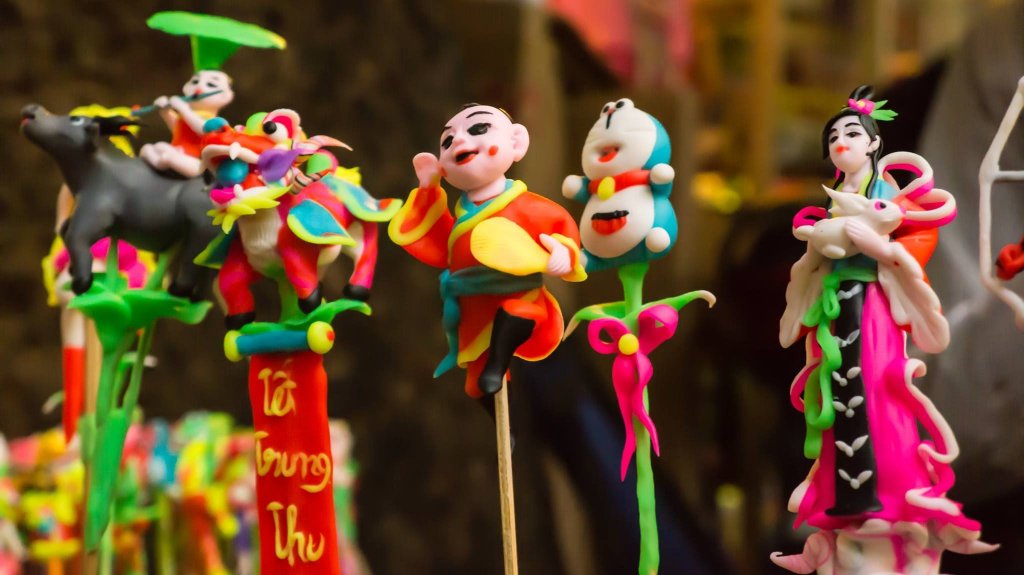
Hands-On "Tò He" experience with the artisans of Xuan La
28 Aug, 2025
What is To He? To He are small, brightly colored figurines traditionally made from rice flour, sugar, and natural pigments. They often depict animals, mythical creatures, or human characters and are commonly seen at festivals, particularly Tet (Lunar New Year), where they are gifted to children. Beyond being playful toys, To He carry cultural significance. They represent artistry, storytelling, and a sense of community, reflecting the daily life and imagination of Vietnamese people. Originating in the Red River Delta centuries ago, To He became a staple of Vietnamese folk art. The figurines are not only visually striking but also aromatic due to the rice flour dough used, which gives them a subtle, sweet scent. Visiting a workshop in Xuan La allows travelers to see the full depth of this tradition—from preparation to crafting to finishing touches. Why Xuan La Village? Xuan La Village, located near Hanoi, is renowned for preserving the art of To He. Unlike commercialized tourist workshops, artisans here have often spent decades perfecting their craft. The village itself is vibrant with creativity; narrow lanes are lined with small workshops where children, tourists, and locals gather to learn and make these colorful figurines. The experience in Xuan La is hands-on. Rather than simply watching, visitors participate in every step of the creation process, guided by seasoned artisans who are eager to share their knowledge. This interactive approach ensures that each visitor leaves not only with a beautiful To He figurine but also with a deeper understanding of Vietnamese culture and craftmanship. Preparing for the Experience Before starting, artisans provide an introduction to To He and its significance in Vietnamese culture. Visitors are taught about the ingredients—rice flour, sugar, and natural pigments derived from plants—and how these simple materials can be transformed into intricate, miniature artworks. Workshops are typically designed for all ages. Children are encouraged to create simple shapes like animals, while adults and teens can try more complex figurines, including dragons, phoenixes, and traditional characters. This flexibility makes the experience suitable for families, school groups, and solo travelers. The To He Making Process The process of making To He is delicate and requires patience. Here’s what participants can expect during a hands-on session: Preparing the Dough: The rice flour is mixed with water and a little sugar to achieve a pliable dough. Natural pigments are added to create vibrant colors such as red, yellow, green, and blue. Visitors learn the importance of achieving the right consistency so the dough is soft yet firm enough to hold its shape. Shaping the Figurines: Artisans demonstrate how to mold the dough into shapes using only their hands and small sculpting tools. Beginners usually start with simple animals like chickens or pigs, while more advanced participants can attempt dragons, mythical creatures, or miniature human figures. This stage allows for creativity, as each figurine can be personalized with unique expressions and details. Adding Fine Details: Once the basic shape is complete, finer details are added. Participants use tiny tools to carve patterns, create facial expressions, and add intricate designs. This step is what transforms a simple piece of dough into a miniature work of art. Drying and Finishing: After shaping, the figurines are left to air-dry for a short period. Unlike other crafts, To He is meant to be soft and delicate rather than fully hardened. Visitors are encouraged to carefully handle their creations and can take them home as souvenirs or gifts. Cultural Significance Participating in a To He workshop provides more than just a creative outlet—it offers a window into Vietnamese culture. Historical Connection: Making To He has been passed down through generations, reflecting the history and traditions of the Red River Delta region. Each figurine tells a story, whether it’s a symbol of good luck, prosperity, or a representation of traditional Vietnamese folklore. Festival Traditions: To He is closely tied to festivals like Tet, the Mid-Autumn Festival, and local village fairs. Children receive these figurines as gifts, and the craft itself fosters a sense of celebration and community. Skill and Patience: Learning To He teaches visitors patience, attention to detail, and appreciation for handcrafts that take years to master. The workshop is not only a cultural lesson but also a lesson in artistry and perseverance. Tips for a Great Experience Wear Comfortable Clothing: Some pigments and flour can be messy, so wear clothes you don’t mind getting a little dust or color on. Bring a Camera: Capture the process and the finished figurines to share the experience. Be Curious: Ask artisans about the history, symbolism, and different types of To He—most are happy to share stories about their craft. Take Your Time: Each step, from shaping to detailing, requires patience; enjoy the creative process without rushing. Why Hands-On Matters Many visitors to Vietnam encounter To He as pre-made souvenirs in markets or shops. While beautiful, these lack the deeper connection to the craft. By making To He yourself, you: Experience the full process from raw materials to finished art. Understand the skill, patience, and creativity involved. Engage directly with artisans, learning stories and techniques that would otherwise remain hidden. Create a memorable keepsake that reflects your personal effort and creativity. A To He workshop in Xuan La is more than just making miniature figurines—it’s a journey into Vietnamese culture, art, and tradition. Visitors leave with a tangible souvenir, yes, but also with memories of shared smiles, guidance from passionate artisans, and a deeper appreciation for folk art. For travelers, families, or cultural enthusiasts, this experience offers a rare opportunity to step off the beaten path, engage creatively, and witness a centuries-old tradition come to life before your eyes. Whether you shape a tiny dragon, a cheerful chicken, or a mythical creature, your To He figurine will carry the story of your hands, your creativity, and the artisans of Xuan La Village. The hands-on To He experience is perfect for anyone seeking a meaningful cultural encounter in Vietnam. It blends creativity, history, and personal engagement in a way few other activities can. By participating, you not only craft a miniature piece of art but also contribute to preserving a living tradition, connecting with the people who keep it alive, and creating memories that will last a lifetime. Visiting Xuan La and learning to make To He allows you to leave with more than a souvenir—you leave with a story, a skill, and a connection to Vietnamese heritage that is as colorful and delicate as the figurines themselves.
Experiences & Activities

Nha Trang Half-Day Snorkeling Adventure with BBQ Onboard
1 day
Relax at Vung Tau Beach Visit Christ the King Statue Explore Whale Temple (Den Ca Ong) Discover the historic White Palace (Bach Dinh) Admire the panoramic sea view at Nghinh Phong Cape

A romantic & adventurous Vietnam journey in 10 days 9 nights
10 days 9 nights
Embark on a captivating 10-day odyssey through Vietnam, perfectly curated for couples seeking both profound cultural immersion and exhilarating adventure. This journey weaves together the ancient charm of Hanoi with the mystical karst landscapes of Halong Bay, offering an overnight cruise under a starlit sky. Discover the imperial grandeur of Hue and the timeless allure of Hoi An, where lantern-lit nights and riverside tranquility set the scene for romance. Venture into the vibrant Mekong Delta, exploring its floating markets and lush waterways. Throughout your trip, you'll experience Vietnam's diverse beauty, from serene sunrises to thrilling activities, creating cherished memories that celebrate your love amidst breathtaking backdrops. This is more than a tour; it's a shared adventure into the heart and soul of Vietnam.

5D4N_HANOI – HALONG ON CRUISE EXPLORATION
5 days 4 nights
Spend 2 days cruising around Halong Bay, Lan Ha Bay or Bai Tu Long Bay. Highlights include Sung Sot Cave and Titop Island for Halong, Cat Ba Island and Dark and Bright Cave for Lan Ha, and Thien Cahn Son Cave and Vung Vien Floating Village for Bai Tu Long. Tour includes accommodation at different luxury levels, meals, activities and round-trip transfers from Hanoi. Overnight cruise around Halong, Lan Ha or Bai Tu Long bay Stay in an air-conditioned cabin with private bathroom Boats and accommodations range from three to five stars Activities can include kayaking, bamboo boat, cooking and tai chi

Highlight North Vietnam 7 days adventure
7 days 6 nights
Are you looking for a destination that’s equal parts adventure, culture, and jaw-dropping scenery? Immerse yourself in breathtaking landscapes, rich history, and culinary delights by getting ready for an unforgettable journey through Highlight North Vietnam 7-Day Adventure. From Hanoi’s bustling streets, the misty town of Sapa to Ninh Binh’s ancient land and natural wonder of Halong bay. This 7-day itinerary is crafted for those seeking adventure, culture, and relaxation. Dive into local experiences, scenic landscapes, and heart of Vietnamese culture!
![[S.I.C] Yen Duc village overnight: 2 day 1 night](https://ilooca-tourdb.itourism.vn//files/thumb/408/285/uploads/content/Yen-Duc-Village-Vietnamese-Local-Life_9_2017_03-770x513_1.jpg)
[S.I.C] Yen Duc village overnight: 2 day 1 night
2 days 1 night
This 2 day 1 night trip includes a nice stay in Viet House, unique village retreat accommodation, surrounded by rice fields in Yen Duc village. Cycling to discover peaceful village, talking with local people and visit their family house should amaze you with lots of cultural sense and fun. Besides that, joining local activities (fishing, gardening, visiting the culture house of village, local market…) bring you close to real experience of a farmers, taste delicious homemade Vietnamese food then enjoy peaceful life in countryside of Vietnam.

The perfect 3-day Sapa itinerary for first-timers
3 days 2 nights
Prepare to be captivated by a journey where mist-shrouded peaks meet vibrant cultural tapestries. This 3-day, 2-night escape from Hanoi plunges you into the heart of Sapa's unparalleled beauty. Imagine tracing the contours of iconic terraced rice fields, a masterpiece sculpted by generations, and breathing in the crisp mountain air. Beyond the breathtaking panoramas, you'll connect intimately with the resilient ethnic minorities – the H'Mong people – in their traditional villages, witnessing ancient customs and intricate handicrafts firsthand. For the ultimate perspective, an optional ascent to Fansipan, "The Roof of Indochina," offers a spectacular vista where clouds dance below your feet. This isn't just a tour; it's an immersive odyssey into the soul of Vietnam's highlands, promising memories that will linger long after you return.
Keep exploring
Top things to do in Hands-On Cultural Experiences
FAQs
